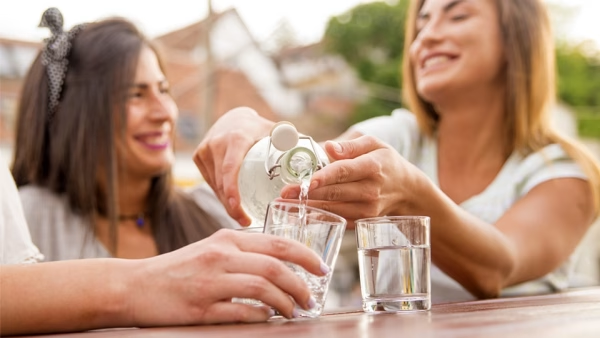Why is prevention better than cure?
When it comes to our health, prevention is better than cure


There are two types of people in the world: those who get their car regularly serviced and those who hear a funny noise in the engine and keep on driving until they need roadside assistance to tow them to a nearby mechanic.
It’s the same when it comes to our health. Many of us delay seeing a doctor until we’re feeling unwell, but instead of trying to get better once we’re sick, it’s far better to do what we can to avoid getting sick in the first place. Why? Because prevention is better than cure.
Why is prevention better than cure?
To put it simply, looking after yourself can dramatically reduce your chances of getting sick. We have a great deal of control over the state of our health through the lifestyle decisions we make.
We’d all prefer to enjoy a long and happy life rather than have to endure the suffering and debilitation that can come with ill-health. Unfortunately, lifestyle factors such as poor diet, risky alcohol consumption and not enough exercise continue to be leading causes of ill-health across the country.
While Australia has come a long way in life expectancy rates, we have the potential to do so much more when it comes to warding off disease. Although we are living longer, the number of years we spend living with illness hasn’t changed over the past decade according to the 2023 Australian Burden of Disease Study.
What kind of ill-health can a healthy lifestyle prevent?
“Nearly half of all Australian adults now have a chronic health condition, and over a quarter of us live with more than one condition,” says nib foundation Executive Officer Amy Tribe.
These conditions – all of which can have a serious impact on our quality of life over many years – include:
Diabetes
Cancer
Heart disease
Asthma
Back problems
Arthritis
Mental health conditions
Although genetic and environmental factors contribute to these conditions, Amy says more than a third of Australia’s total burden of disease comes from preventable risks, such as smoking, alcohol, poor diet and physical inactivity.
As aware as we may be of what we should be doing to live healthier lives, turning things like eating well and exercising regularly into daily habits can be a challenge.
“Human nature tends to favour visible issues that present an immediate and compelling need, and where progress is tangible,” explains Amy. “Success can be less obvious when the desired outcome is the absence of a visible problem.”
How can you prevent an illness?
Fortunately, even minor lifestyle changes can make a big impact when it comes to preventing disease. Follow these six steps to keep your body and mind in the best possible shape and ward off ill-health in the process.
1. Stop smoking
Despite a decline in smoking rates, vaping has surged, especially among younger age groups, according to research from the Australian Government Department of Health and Aged Care. Vaping products contain harmful substances like carcinogens which can potentially elevate your risk of cardiovascular diseases, lung disorders and poisoning. Vaping has also been identified as a ‘gateway’ to smoking cigarettes, and Cancer Council's Generation Vape research has found that 1 in 3 teenagers have vaped and 80% found access to vapes easy.
Cancer Council NSW is currently developing a national, online platform that will offer young people information, support and evidence-based services to help them quit vaping, supported by nib foundation. Are you looking for support to quit vaping now? Check out these resources and information from the Australian Government Department of Health and Aged Care.
Related: How I successfully quit: Three ex-smokers share their stories
2. Maintain a healthy weight
Bodies come in all different shapes and sizes, however carrying increased internal fat deposits that coat your heart, kidneys, liver, digestive organs and pancreas can increase your risk of heart disease and stroke. A waist measurement is a simple check to tell if you’re carrying excess body fat around your middle. The Heart Foundation recommends that men have a waist circumference of less than 94cm and women less than 80cm, and that we stay in a healthy weight range for our height. The Heart Foundation’s Body Mass Index calculator is a good starting point to get an indication, but it’s suggested you speak with your doctor about weight management to ensure you’re getting advice tailored to your specific health needs.
Related: How a weight check can save your life
3. Eat a balanced diet
With so much conflicting advice out there about what to eat, it can be overwhelming. Aiming for a healthy, balanced diet with plenty of vegetables, fruit, grains, and protein is a good place to start. With support from nib foundation, the University of Newcastle’s No Money No Time website is a personalised nutrition platform that helps motivate and support Australians to adopt healthy eating behaviours in simple and affordable ways, reducing the risk of preventable chronic diseases. You can even take the Healthy Eating Quiz to see your nutrition score and advice on how to improve it.
The Australian Dietary Guidelines also offer valuable advice on how much to eat from each of the five food groups every day.
4. Avoid drinking too much alcohol
Alcohol use is estimated to be responsible for 4.5% of the total burden of disease and injury in Australia. Hello Sunday Morning’s Daybreak app, supported by nib foundation, is a useful tool for people wanting to find ways to change their relationship with alcohol. Their online self-assessment helps nib members assess their drinking habits and find support to improve their relationship with alcohol.
The National Health and Medical Research Council guidelines recommend adults have no more than two standard drinks on any given day and include two alcohol-free days per week. Those who are pregnant, breastfeeding or are under 18 years old should avoid alcohol completely.
Related: Is it time to rethink the amount of alcohol we drink?
By knowing what's normal for you early on, you'll be able to detect any serious changes later
5. Keep active
Aim to do 30 minutes or more of moderate-intensity physical activity on most, if not all, days of the week. Moderate-intensity exercise causes a noticeable increase in the depth and rate of breathing while still being able to talk comfortably. Check out our article What is moderate-intensity exercise? for more information.
6. Keep track of your health
Booking in for regular health check-ups is important, no matter how old you are. Follow these links to learn about the health checks you should be getting at every stage of life:
nib Group Medical Advisor Dr Hamish Black also recommends that you try to be consistent with the doctor you see to get a better overview of your health journey.
“You should also consider signing up for My Health Record, so that if you do visit a different GP, they’ll be able to access important information from your past appointments,” Hamish says.
What’s involved in a regular check-up? During the session, your doctor is likely to:
ask you about your current health, and both your personal and family medical history
examine you carefully, looking for any signs of illness
ask you to do relevant urine and blood tests
ask you about lifestyle habits
This assessment will help your doctor to know if you have or are at risk of developing any chronic diseases. This is a great chance for you to ask your doctor about your health and current recommendations and guidelines. It is best for adults to have a check-up every two years and every year after age 40. By knowing what's normal for you early on, you'll be able to detect any serious changes later.
How can nib help you get healthy?
At nib, we’re passionate about giving our members the tools they need to get healthy before they get sick. That’s why we offer a range of health management programs free of charge to eligible members1.
For the full list of programs, or to get more information and apply, visit our health management programs page.
Do you have a specific health concern and aren’t sure where to go to get help? Read our article, I have a health concern, what do I do?
1Available to eligible nib members who’ve held Hospital Cover for 12 months and served their relevant waiting periods. Additional criteria vary according to each program.
The benefits of quitting coffee
Could giving coffee a miss be the key to better health?
Alcohol and wellbeing self-assessment tool aims to combat risky drinking behaviours
Hello Sunday Morning's app supports Shea's personal journey
5 ways to reduce alcohol without losing your social life
5 simple steps to reducing your alcohol consumption!




